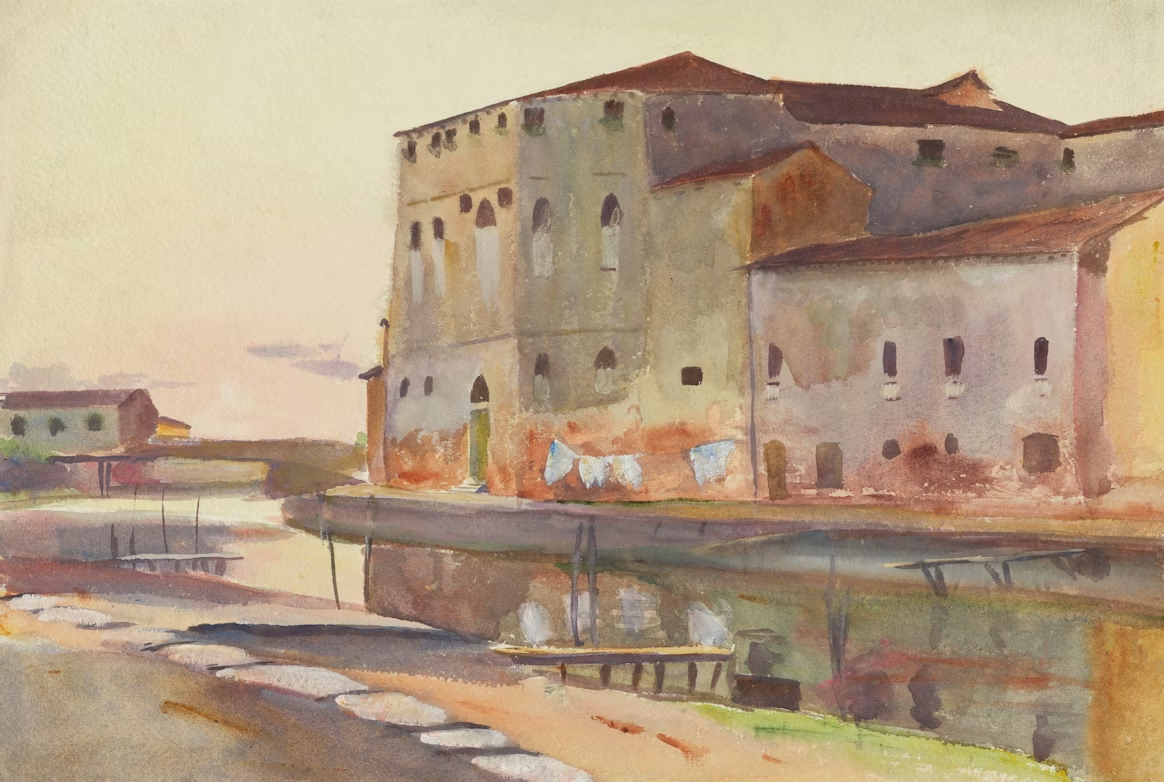Our Views
Design a National Program in the Creative Economy
Governments around the world are recognizing the creative economy as a dynamic engine of growth and innovation. Creative industries – spanning art, music, film, design, media, fashion, crafts, digital content, gaming, architecture and other cultural sectors – not only generate jobs and income, but also enrich national identity and social cohesion. Yet unlocking the full potential of this sector requires more than scattered projects or informal activity; it calls for a coordinated, policy-driven national program approach.
This article advocates for a strategic approach to developing a national creative economy program. It provides a concise definition of the creative economy and outlines why it deserves a prominent place in national development agendas. Key steps in designing such a program are discussed, drawing on the experiences of recent case studies in Sierra Leone and Rwanda. Finally, the article offers policy recommendations and practical considerations for governments and international donors aiming to foster a thriving creative economy.
The Creative Economy: Definition and Scope
Broadly defined, the creative economy encompasses the full range of economic activities based on creativity, knowledge, and intellectual property. It includes cultural heritage and arts (such as traditional crafts, visual arts, music, theater, and literature) as well as media and design sectors (film and television, publishing, advertising, architecture, fashion, and graphic design) and digital content industries (gaming, animation, software, and other online creative content). These industries share a common focus on creating and monetizing creative content, experiences, and innovations. They range from individual artists and cultural nonprofits to creative startups and entertainment firms, collectively contributing to economic output while also shaping a country’s cultural narrative.
Why the Creative Economy Matters for Development
Incorporating the creative economy into national development agendas brings both economic and social benefits. Economically, creative industries are significant and fast-growing sectors in many countries. Globally, the creative economy generates on the order of $2 trillion USD in annual revenues and supports tens of millions of jobs. In countries where they are well-developed, creative industries commonly contribute between 2% and 7% of GDP, and global projections suggest the sector could reach around 10% of world GDP by 2030. This represents a vast opportunity for economic diversification. For developing nations seeking new growth drivers beyond traditional industries, the creative economy offers a fresh avenue for export earnings, entrepreneurship, and innovation-led growth. Creative products (from films and music to fashion and software) can reach international markets more easily in the digital age, enabling even small creative enterprises to tap into global demand. Moreover, studies have shown that the creative sector has strong multiplier effects in the broader economy – every dollar spent on creative industries can stimulate additional economic activity in areas like tourism, manufacturing, and telecommunications through downstream linkages.
Equally important are the social and inclusive development benefits of investing in the creative economy. Creative industry jobs are often accessible to young people and women, groups that face high unemployment in many countries. Because creative work prizes talent and originality, it can offer entry points for youth entrepreneurs, women-led businesses, and small startups even in communities with modest capital. By formalizing and supporting these activities, governments can bring more women and youth into gainful employment and nurture home-grown small and medium enterprises. The sector also has a unique role in preserving cultural heritage and strengthening social cohesion: supporting artisans, filmmakers, musicians, and other creators helps to celebrate local culture, languages, and traditions. In post-conflict or transitioning societies, creative projects – from community arts programs to cultural festivals – can foster unity and give young people a positive outlet. In short, a thriving creative economy not only contributes to economic growth but also promotes inclusive, sustainable development by empowering diverse voices and reinforcing a sense of identity and pride.
At the same time, many countries have yet to fully capitalize on the creative economy due to challenges such as informal operations, limited financing, data gaps, and weak policy support. This is why a deliberate national program is critical: with the right policies and investments, governments and their development partners can transform the creative sector from an untapped potential into a robust pillar of development.
Key Steps in Designing a National Creative Economy Program
Designing a national program for the creative economy requires careful planning and a multi-faceted approach. The following key steps and components are essential:
- Conduct a Diagnostic Assessment: Begin with a comprehensive mapping of the country’s creative industries and an evidence-based diagnostic of the sector. This entails gathering data (both quantitative and qualitative) on the current scope of creative economic activities, their contribution to jobs and GDP, and the main constraints they face. In many developing countries, official statistics on cultural and creative industries are scarce, so this step may involve field surveys, stakeholder interviews, and case studies to capture information that isn’t in national databases. The diagnostic should define what constitutes the “creative economy” in the local context and identify the most prominent subsectors (for example, music, film, fashion, crafts, etc.). Crucially, it should pinpoint barriers hindering growth – such as lack of financing, inadequate infrastructure, skills gaps, or regulatory obstacles – and provide a baseline understanding to inform strategy. (In Sierra Leone, for instance, a World Bank-supported Creative Economy Diagnostic was the first effort to map the sector and revealed significant challenges around data scarcity, informal operations, and limited support for creative entrepreneurs.)
- Engage Stakeholders and Build a Vision: A successful creative economy program must be built on the insights and buy-in of a wide range of stakeholders. Early in the design process, convene consultations and focus groups with artists, creators, cultural organizations, private sector players (such as creative businesses and investors), relevant government agencies, and civil society. This participatory approach serves multiple purposes: it gathers on-the-ground perspectives about needs and opportunities, builds a shared vision for the future of the sector, and fosters a sense of ownership among stakeholders. Creators and industry practitioners can highlight practical obstacles (like censorship, lack of venues, or piracy) and propose ideas, while public officials can align the program with national priorities. Broad engagement also helps to map the existing ecosystem – identifying active NGOs, donor projects, or creative hubs that the program can leverage. Ultimately, this step ensures the program’s strategy is locally informed and inclusive. (For example, during the Rwanda creative economy program design, intensive focus group discussions were held with everyone from filmmakers and designers to bankers and educators, yielding invaluable insights and enthusiasm for the emerging program.)
- Identify Priority Sectors and Interventions: The creative economy is broad, so a national program should prioritize areas with the highest potential impact or feasibility in the local context. Using the diagnostic evidence and stakeholder input, policymakers can select a few priority creative industries to focus on (for instance, music and film might be top priorities in one country, handicrafts and design in another). For each priority area, identify the key interventions needed to catalyze growth. These might include investing in talent development (e.g. music academies, film schools), improving value chains and market access (e.g. support for distribution networks, export promotion for crafts, or digital marketplaces for local content), and addressing specific bottlenecks in that subsector. It’s also useful to choose one flagship initiative or “quick win” project in a priority sector to demonstrate early success. While focusing on a few industries, the program should still include cross-cutting interventions that benefit the creative sector as a whole – for instance, entrepreneur training, grant schemes, or networking platforms open to all creative fields. A clear set of strategic priorities will guide the allocation of resources and sequence of activities in the program.
- Establish Supportive Policy and Institutional Frameworks: Any national program must operate within (or help reform) the broader policy environment. Governments should review and strengthen policies, laws, and institutions that affect the creative economy. This could involve updating intellectual property laws and enforcement to protect creators, adjusting regulations that impede creative businesses (such as cumbersome licensing or censorship rules), and introducing incentives like tax breaks for creative enterprises or local content quotas in media. It is also crucial to determine institutional leadership for the program: decide which ministry or agency will coordinate the creative economy agenda (e.g. a Ministry of Culture, Trade, or a new Creative Economy Agency) and how different ministries (education, communications, tourism, etc.) will collaborate. An inter-ministerial committee or a dedicated task force can help align efforts. Building an institutional framework might also mean establishing public institutions to support the sector (for example, a national arts council, film commission, or creative industry development fund management unit). Clear governance and strong policy signals from the government will provide the backbone for all program initiatives. (In Sierra Leone’s case, the diagnostic recommended specific legal and policy reforms and highlighted the need for a government champion to drive creative economy development going forward.)
- Secure Financing and Partnerships: Developing the creative economy requires investment – both public and private. Governments should explore financing mechanisms to support creative ventures, such as dedicated creative economy funds, grant programs, credit lines or guarantee schemes for creative SMEs, and seed funding for startups. Engaging international donors and development banks can be very effective: they might provide grants or soft loans to capitalize a creative industries fund or finance technical assistance components of the program. The private sector is another key partner; banks and impact investors can be incentivized to invest in creative businesses (for instance, through public co-financing or risk-sharing arrangements), and established companies in media or tech can contribute through sponsorships and venture programs. Public-Private Partnerships (PPPs) are particularly relevant for building creative infrastructure – for example, a PPP could develop a multimedia production center, performance venue, or co-working space for artists. In designing the program, create a funding plan that blends government budget allocations with donor support and private investment. This multi-source financing approach ensures sustainability and signals broad commitment. (The Rwanda program design, for example, proposed a Creative Economy Fund combining public and private resources, as well as co-investment models for creative hubs and studios through PPPs.)
- Implement, Monitor, and Adapt: With a strategy formulated, the program moves into implementation. It is wise to start with pilot projects or phased roll-out of initiatives to test approaches and learn from early efforts. Capacity building will often be needed for the institutions and staff implementing the program – for instance, training government officials on creative industry dynamics or improving the ability of local banks to evaluate creative business proposals. Equally important is establishing a monitoring and evaluation (M&E) framework from the outset. Define clear metrics of success such as number of jobs created in creative industries, growth in revenues or exports from creative sectors, number of artists/SMEs supported, etc., and track progress against targets annually. Regular monitoring allows policymakers to see what’s working and what isn’t, and to remain accountable to stakeholders. The program should include mechanisms for feedback and learning, so that it can adapt over time – refining interventions, scaling up successful components, or recalibrating efforts if certain strategies fall short. Flexibility and continuous improvement will help the national program stay relevant in the face of fast-evolving creative trends and technologies.
Aninver Case Studies: Sierra Leone and Rwanda
Sierra Leone – Creative Economy Diagnostic and Toolkit: Sierra Leone offers a prime example of how a country can kick-start a creative economy agenda through a diagnostic study. In 2025, with support from the World Bank, Aninver helped Sierra Leone undertook its first comprehensive Creative Economy Diagnostic to map out the nation’s cultural and creative industries and recommend a way forward. This six-month assessment identified the key creative sectors in the country – from music and film to digital media and crafts – and uncovered critical barriers holding back their growth. The findings highlighted challenges such as limited access to finance, insufficient creative spaces/infrastructure, gaps in skills training, and weak regulatory/institutional support for creative entrepreneurs. Notably, the study emphasized the need to better support the country’s youth and women, who make up a large portion of creative workers but often operate informally. Through extensive fieldwork and stakeholder consultations in Freetown and other regions, the diagnostic gathered ground-up insights: musicians, fashion designers, artists, and content creators were engaged in workshops to share their experiences and needs. The result was a detailed diagnostic report providing an evidence base for policy action – including recommendations for legal reforms (such as strengthening intellectual property rights and establishing a national arts council), targeted investments in priority sub-sectors, and capacity-building programs for creative small businesses. The project also produced a practical toolkit or guidance note so that other low-income countries can replicate the methodology of mapping and analyzing the creative economy even with scarce data. Sierra Leone’s case underlines the importance of starting with a strong knowledge foundation and stakeholder buy-in. The diagnostic process not only gave the government and donors a clearer picture of the creative economy’s potential (and its link to youth job creation and cultural preservation), but also built momentum among local stakeholders to organize and advocate for the creative sector. This lays the groundwork for the government and partners to design follow-up programs, such as funding schemes or incubator projects, based on the diagnostic’s recommendations.
Rwanda – Feasibility Study and Program Design: Rwanda’s experience demonstrates how to move from diagnostics to a full-fledged national program. In 2024–2025, Aninver helped the Government of Rwanda, with support from the African Development Bank (AfDB), commissioned a feasibility study to design a Creative Industry Development Program. Building on prior research, this assignment dove deep into Rwanda’s creative sector and then crafted a detailed program plan with multiple components. The Rwanda study confirmed significant opportunities in sectors like film, music, fashion, visual arts, and digital media, but also pointed out gaps – for example, a need for more skilled professionals, modern production facilities, better access to financing, and stronger policy coordination. In response, the program design outlined four main intervention pillars: (1) Human Capital Development – scaling up creative arts education, training programs, and incubators (leveraging existing initiatives like “Art Rwanda Ubuhanzi” to train young artists and link them to markets); (2) Infrastructure – developing creative hubs and physical spaces for production and performance, potentially through PPPs, and improving digital infrastructure for content creators; (3) Financing Support – establishing a dedicated Creative Economy Fund and other financing instruments to provide grants, loans, or equity to creative startups, and engaging investors to “crowd-in” private capital; and (4) Enabling Environment & Institutional Framework – strengthening policies (for instance, reviewing intellectual property enforcement and artist rights), providing technical assistance to creative businesses, and setting up the necessary governance structures to implement the program. A series of stakeholder workshops in Kigali ensured that local creatives, industry leaders, and officials contributed to shaping these components. The resulting program blueprint included detailed costing, an implementation roadmap, and a monitoring and evaluation plan to track impact. Rwanda’s case illustrates the value of a holistic, well-structured program: rather than isolated projects, it envisions a coordinated effort where improvements in skills, infrastructure, finance, and policy all complement each other. It also shows the importance of partnership between government and an international donor – the AfDB in this case – in providing both the resources and technical expertise to design a viable program. With this roadmap in hand, Rwanda is positioned to mobilize funding and roll out initiatives that could make its creative economy a driver of jobs, innovation, and cultural vibrancy in the coming years.
Policy Recommendations and Practical Considerations
Drawing on the above insights, here are key recommendations and considerations for governments and donors when designing and implementing national creative economy programs:
- High-Level Commitment and Coordination: Secure political support at the highest levels to prioritize the creative economy in national development plans. Governments should designate a clear institutional lead (for example, a ministry or creative economy task force) to coordinate across the many sectors involved. This ensures that efforts are unified under a common vision and not siloed. A dedicated agency or inter-ministerial committee can oversee strategy, facilitate cross-sector collaboration, and keep creative economy objectives on the policy agenda.
- Inclusive Stakeholder Engagement: Involve creative professionals and communities in every stage of the program – from planning and governance to implementation. Regular consultation with artists’ associations, cultural leaders, youth groups, and private sector representatives will keep the program grounded in real needs. It also helps build trust and accountability. Particular attention should be paid to including women, young creators, and marginalized groups in decision-making and in beneficiary targets, to ensure the program drives inclusive growth.
- Skills Development and Education: Invest in building the human capital that the creative economy requires. This means integrating creative arts and digital skills into educational curricula, supporting vocational training programs for creative trades (e.g. design, music production, filmmaking, game development), and nurturing talent through mentorship and incubation. Governments might establish or expand creative industry training centers, while donors can fund scholarships, artist residencies, or exchanges. Tying skills programs to market needs (for instance, training musicians in sound engineering where studios are emerging, or teaching design skills linked to local craft industries) will maximize job placement and entrepreneurship outcomes.
- Access to Financing for Creatives: Address the financing gap that often stifles creative entrepreneurs. Innovative financing mechanisms could include a public-backed Creative Industries Fund providing grants or seed capital to artists and startups, loan guarantee schemes to encourage banks to lend to creative businesses, and prize competitions or matching grant programs to stimulate new projects. Governments should work with banks and investors to improve understanding of creative industry business models so that more private financing can flow. Development partners can play a role by co-funding grant programs or offering lines of credit for the creative sector. Ensuring that women-owned and youth-led enterprises can access these funds (through outreach and tailored products) is vital for inclusion.
- Infrastructure and Space for Creativity: Plan for the physical and digital infrastructure that creative communities need. This could involve building or refurbishing cultural centers, studios, performance venues, co-working spaces, and innovation hubs where creators can collaborate and access equipment. Public-Private Partnerships are a valuable tool here: for example, a city might partner with private investors to develop a multi-purpose creative hub or film studio complex, with government providing land or incentives and the private sector providing capital and management. Simultaneously, expanding digital infrastructure (broadband connectivity, ICT hubs) is critical, as many creative activities now rely on online production and distribution. Donors and government grants can fund “hard” infrastructure, while ensuring sustainability by involving the creative community in managing these spaces.
- Enabling Policy and Legal Environment: Review and reform policies to create a nurturing environment for creative enterprises. This includes strengthening intellectual property laws and enforcement to protect copyrights and encourage content creation, simplifying business registration or taxation for creative industry entrepreneurs (e.g. adopting tax incentives or reducing licensing fees for creative startups), and developing cultural policies that support local content. Governments should also consider regulatory innovations, such as creative industry quotas in broadcasting or procurement policies that favor creative products (like sourcing local art for public buildings). A clear and supportive policy framework gives creatives confidence that their work is valued and can be profitable, and it signals to investors that the sector is taken seriously.
- Partnerships and Market Development: Leverage partnerships to amplify the program’s reach. Internationally, engage with organizations like UNESCO, WIPO, or regional development banks that have creative economy initiatives – they can offer expertise, networks, and sometimes funding. Foster ties with global creative platforms and companies (for example, inviting global streaming services, music labels, or fashion brands to mentor local talent or showcase local content). Regionally, collaborate with neighboring countries on initiatives like cultural exchange programs or joint marketing of creative products (a regional film market or art fair can boost exposure). Locally, encourage partnerships between creatives and other industries, such as tourism (to package cultural experiences) or technology firms (to develop creative tech solutions). Donors can facilitate these connections by supporting trade fairs, festivals, and networking events that link local creators to wider markets.
- Monitoring, Evaluation, and Learning: Implement robust M&E practices to track the impact of the creative economy program. From the outset, define key performance indicators (KPIs) – for instance, number of jobs created in creative industries, increase in sector contribution to GDP, volume of creative goods exported, participation of women and youth, etc. Collect data regularly and analyze what is working. This evidence should be used to inform policy adjustments and demonstrate the program’s value to political leaders and funders. Building a data culture around the creative economy also has a broader benefit: it raises awareness of the sector’s economic importance. Governments may consider working with national statistics offices to improve the measurement of cultural/creative industries in official data. Donors can support this by funding studies or observatories to continue generating knowledge on the creative economy over the long term.
- Towards Sustainable Creative Development: Ultimately, designing a national program in the creative economy is about integrating creativity into the fabric of development planning. For governments, it means treating artists, cultural entrepreneurs, and creators as key actors in economic growth and social progress. For donors and international partners, it means recognizing creative industries as a serious development sector worthy of investment and support. With a clear strategy, strong partnerships, and an inclusive approach, a national creative economy program can unlock talent and innovation on a wide scale. The experiences of Sierra Leone and Rwanda show that with the right diagnosis, policy framework, and commitment, even countries starting from a nascent creative sector can chart a path to a vibrant creative economy. By systematically supporting creativity – through education, infrastructure, financing, and enabling policies – nations can diversify their economies, create jobs for the future, and empower communities to tell their own stories and build their cultural capital. This not only contributes to economic prosperity but also fosters the kind of society where creative expression and cultural richness are part of the foundation of sustainable development.










